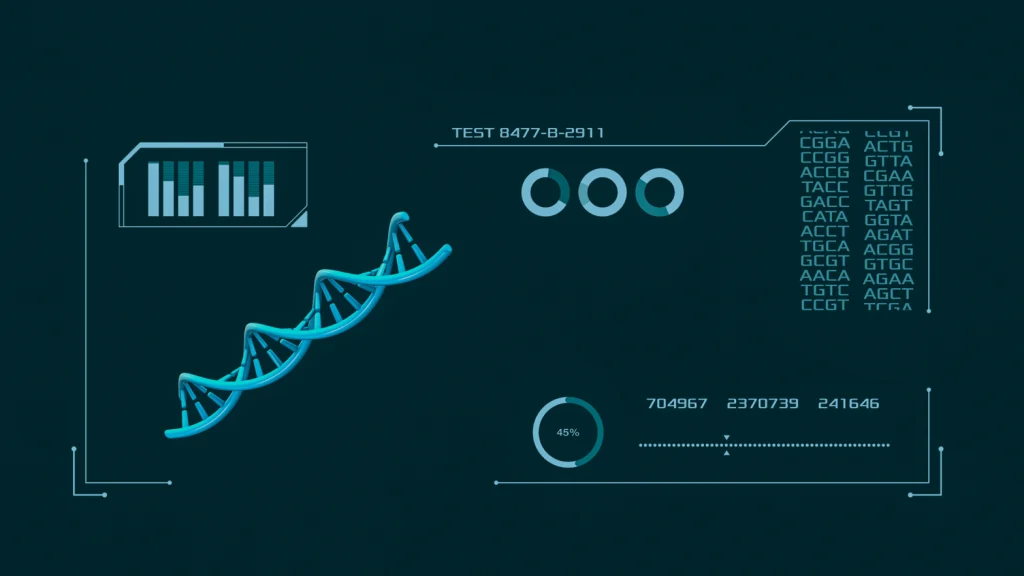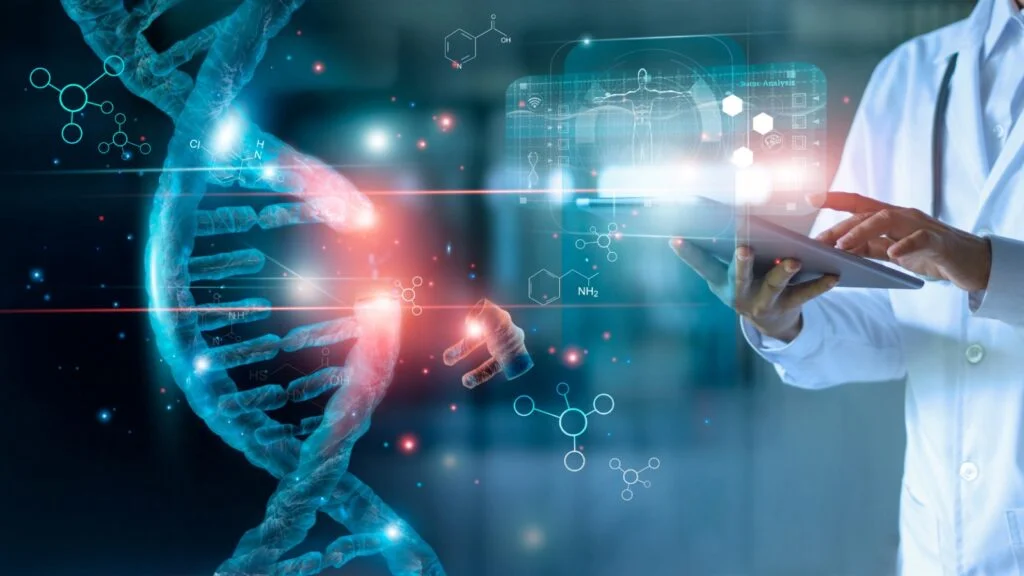Bioinformatics stands at the intersection of biology, computer science, and statistics, offering powerful tools and techniques to analyze and interpret complex biological data. As an increasingly vital field in modern science, bioinformatics is revolutionizing our understanding of biological systems, from genetic sequences to protein structures, and driving advancements in medicine, agriculture, and environmental science. This article delves into the fundamentals of bioinformatics, its applications, and its impact on various scientific domains.

What is Bioinformatics?
- Definition and Scope:
- Bioinformatics: Bioinformatics is the application of computational methods to analyze and interpret biological data, particularly large-scale data such as DNA sequences, protein structures, and gene expression profiles. It combines expertise from biology, computer science, and statistics to manage and extract meaningful insights from vast amounts of biological information.
- Interdisciplinary Approach: The field of bioinformatics relies on an interdisciplinary approach, integrating algorithms, databases, and software tools to address biological questions. It encompasses various areas, including genomics, proteomics, transcriptomics, and systems biology.
- Key Components:
- Databases: Bioinformatics relies heavily on biological databases that store vast amounts of data, such as nucleotide sequences (e.g., GenBank), protein structures (e.g., Protein Data Bank), and gene expression profiles (e.g., GEO). These databases provide a foundation for data analysis and comparison.
- Algorithms and Software: The development of algorithms and software tools is crucial in bioinformatics. These tools perform tasks such as sequence alignment, protein structure prediction, and phylogenetic analysis, enabling researchers to analyze complex data sets efficiently.
- Statistical Methods: Statistical techniques are used to interpret biological data and identify patterns or correlations. Methods such as Bayesian statistics, machine learning, and multivariate analysis are employed to make sense of large and complex data sets.
Applications of Bioinformatics
- Genomics:
- Genome Sequencing: Bioinformatics plays a central role in analyzing genome sequences, enabling the identification of genes, regulatory elements, and genetic variations. Techniques such as whole-genome sequencing and exome sequencing generate data that bioinformatics tools help interpret.
- Comparative Genomics: By comparing the genomes of different organisms, bioinformatics helps identify evolutionary relationships, functional elements, and genetic differences. Comparative genomics provides insights into gene function and evolution.
- Proteomics:
- Protein Structure Prediction: Bioinformatics tools predict the three-dimensional structures of proteins based on their amino acid sequences. Accurate protein structure prediction is essential for understanding protein function and designing drugs.
- Protein-Protein Interactions: Bioinformatics methods analyze protein interaction networks to elucidate cellular processes and identify potential drug targets. Tools such as STRING and Cytoscape help visualize and interpret protein interaction data.
- Systems Biology:
- Network Analysis: Bioinformatics is used to model and analyze biological networks, including metabolic, signaling, and gene regulatory networks. Systems biology approaches help understand how different components interact to maintain cellular function and health.
- Pathway Analysis: Identifying and analyzing biological pathways, such as metabolic and signaling pathways, provides insights into disease mechanisms and potential therapeutic targets. Tools like KEGG and Reactome facilitate pathway analysis.
- Personalized Medicine:
- Genetic Variation Analysis: Bioinformatics enables the analysis of genetic variations associated with diseases, allowing for personalized medicine approaches. By understanding an individual’s genetic makeup, clinicians can tailor treatments and predict disease susceptibility.
- Pharmacogenomics: The field of pharmacogenomics uses bioinformatics to study how genetic variations affect drug responses. This knowledge helps optimize drug therapies and minimize adverse effects.
- Agricultural Biotechnology:
- Crop Improvement: Bioinformatics supports crop improvement efforts by analyzing genomic data to identify traits associated with yield, disease resistance, and stress tolerance. Tools and databases help in selecting and breeding crops with desirable characteristics.
- Genetic Engineering: Bioinformatics aids in designing and evaluating genetically modified organisms (GMOs). By analyzing genetic sequences, researchers can predict the effects of genetic modifications and ensure safety and efficacy.
- Environmental Science:
- Microbial Genomics: Bioinformatics tools are used to analyze the genomes of environmental microbes, providing insights into their roles in ecosystems, nutrient cycling, and bioremediation. Metagenomic studies reveal the diversity and functions of microbial communities.
- Biodiversity Studies: Bioinformatics supports the study of biodiversity by analyzing genetic data from various species. This information helps in conservation efforts and understanding the impact of environmental changes on species diversity.

Challenges and Future Directions
- Data Management:
- Data Integration: Integrating data from different sources, such as genomics, proteomics, and clinical data, remains a challenge. Developing tools and methods for seamless data integration is essential for comprehensive analysis.
- Data Storage and Sharing: The growing volume of biological data requires efficient storage solutions and secure sharing practices. Ensuring data accessibility while maintaining privacy and security is crucial for collaborative research.
- Algorithm Development:
- Scalability and Accuracy: As data sets become larger and more complex, bioinformatics algorithms must be scalable and accurate. Developing efficient algorithms that can handle big data and provide reliable results is an ongoing challenge.
- Interpretability: Translating complex bioinformatics results into actionable biological insights requires improved methods for data interpretation and visualization. Enhancing the interpretability of results is essential for practical applications.
- Ethics and Privacy:
- Genetic Data Privacy: The use of genetic data raises ethical and privacy concerns. Ensuring the protection of individuals’ genetic information and addressing issues related to consent and data ownership is critical.
- Ethical Considerations in Research: Bioinformatics research involving human subjects and genetically modified organisms must adhere to ethical guidelines and regulatory standards. Ensuring ethical practices in research is essential for maintaining public trust and scientific integrity.

Conclusion
Bioinformatics has become an indispensable tool in modern biology and medicine, enabling researchers to analyze and interpret complex biological data with unprecedented precision. By leveraging computational techniques, statistical methods, and interdisciplinary approaches, bioinformatics drives advancements in genomics, proteomics, personalized medicine, and beyond. As the field continues to evolve, addressing challenges related to data management, algorithm development, and ethical considerations will be key to unlocking new discoveries and innovations. Embracing the potential of bioinformatics will be crucial for advancing our understanding of life’s complexities and improving health outcomes in the future.


